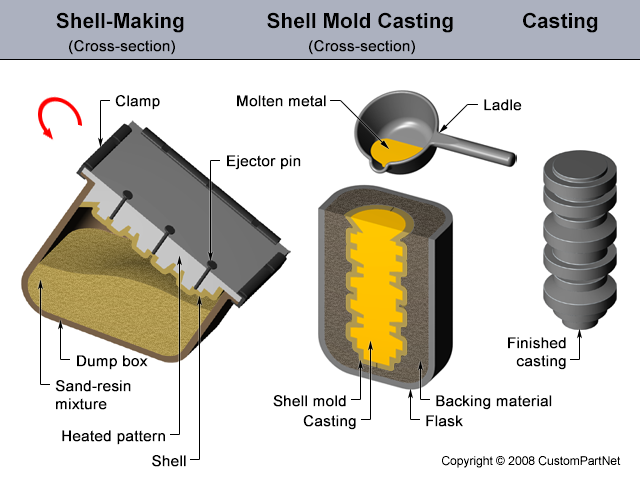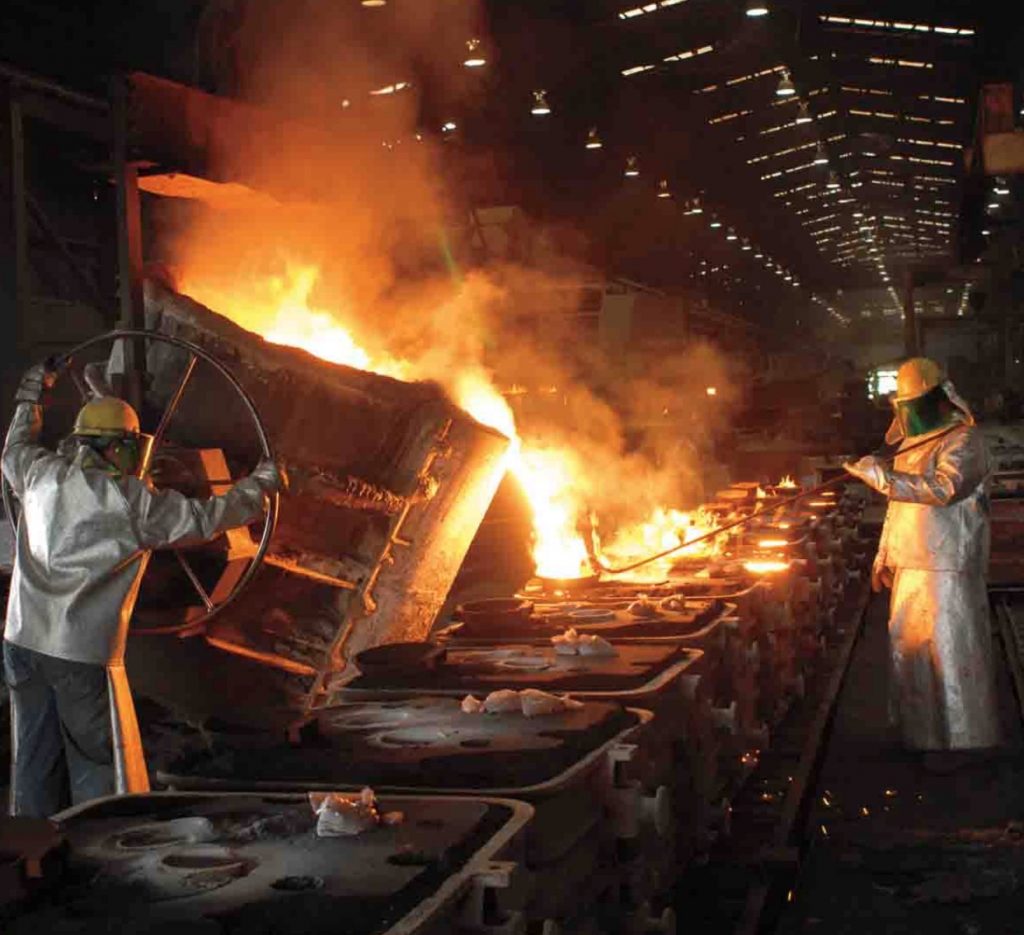How Aluminum Castings achieve uniformity through refined techniques
Wiki Article
A Deep Study the Different Kinds Of Metal Casting and Their Utilizes
Metal Casting incorporates numerous techniques, each customized for specific applications and requirements. From the cost-efficient sand casting approach to the precision of investment spreading, each process has unique benefits. Pass away casting stands apart in high-volume manufacturing situations, while shed foam spreading presents innovative design possibilities. In addition, permanent mold and mildew casting is recognized for its longevity. Recognizing these approaches opens up a window into their useful uses and effects in different markets. What lies under the surface of these casting techniques?Sand Casting: A Flexible and Cost-Effective Method
Different casting methods exist, sand spreading continues to be one of the most affordable and flexible techniques in the metalworking market. This method employs a combination of sand and a binding representative to produce molds, permitting the manufacturing of parts in diverse shapes and sizes. Sand casting is particularly helpful for small to tool production runs, as it requires minimal upfront financial investment in tooling compared to other spreading methods.The procedure starts with the creation of a mold and mildew, where liquified metal is put in to develop the preferred item once cooled down. Its adaptability enables making use of numerous steels, including steel, iron, and light weight aluminum. In enhancement, sand casting can accommodate intricate geometries, making it ideal for a variety of applications, from vehicle parts to intricate artistic pieces. In general, sand spreading's efficiency and versatility solidify its significance in the manufacturing landscape.
Investment Spreading: Precision and Detail for Complicated Shapes
Financial investment casting stands apart as a method renowned for its capacity to create highly outlined and detailed components. This process involves producing a wax pattern that is coated with a ceramic covering, which is then warmed to eliminate the wax and solidify the covering. The result is an exact mold that can catch complex geometrical shapes with impressive precision.This casting strategy is specifically valuable for producing parts with thin wall surfaces, fine functions, and limited tolerances, making it perfect for sectors such as aerospace, vehicle, and medical tools. Investment spreading fits a variety of steels, consisting of stainless steel, aluminum, and titanium, making it possible for manufacturers to fulfill particular material needs.
The procedure lessens machining requirements post-casting, which can enhance efficiency and lower manufacturing costs. Generally, financial investment spreading is a recommended selection for applications where accuracy and detail are critical.
Pass Away Casting: High-Volume Manufacturing With Excellent Surface Area Complete

Die spreading is a very efficient manufacturing process that succeeds in generating huge volumes of steel components with phenomenal surface finishes. This method involves compeling molten metal right into a mold and mildew tooth cavity under high stress, permitting rapid production cycles and harmony in the completed products. Generally utilized materials include zinc, aluminum, and magnesium, which offer excellent mechanical properties and deterioration resistance.
Die spreading is particularly useful for markets such as vehicle, electronic devices, and durable goods, where accuracy and quality are paramount. The procedure enables elaborate designs, reducing the requirement for extra machining and completing procedures. Additionally, the smooth surface Source areas produced with die casting typically call for marginal post-processing, causing lower general production prices. As a high-volume production method, pass away spreading is suitable for producers looking for performance without jeopardizing on high quality, making it a recommended option for countless applications across various markets.
Lost Foam Spreading: Ingenious Strategy for Intricate Styles
Lost foam casting transforms the production of complicated steel parts by utilizing a distinct procedure that eliminates the need for typical mold and mildews. As opposed to standard mold-making, this technique employs a foam pattern that is covered with a refractory material. When the pattern is established, liquified steel is poured straight right into the mold, causing the foam to evaporate and leave behind a specific tooth cavity for the metal to load. This cutting-edge method permits detailed layouts and thorough functions that may be challenging to accomplish with various other casting approaches.Furthermore, lost foam spreading can reduce waste and power intake, making it an environmentally friendly choice. Industries such as aerospace and vehicle advantage substantially from this strategy, as it supports the development of lightweight parts with complex geometries. Generally, lost foam casting attracts attention for its capacity to supply high-grade, tailored steel parts successfully.
Irreversible Mold And Mildew Casting: Sturdiness and Consistency in Metal Parts
Long-term mold casting is an extremely effective technique for producing sturdy and consistent steel components, leveraging reusable molds that are normally made from steels such as iron or steel. This casting procedure includes pouring liquified steel into these molds, which are preheated to improve item high quality and minimize flaws. Making use of reusable molds not just reduces waste yet additionally enables higher manufacturing prices, making it financially beneficial for producers.The resulting elements show exceptional dimensional precision and surface finish, making them perfect for applications in vehicle, aerospace, and industrial machinery. Additionally, permanent mold and mildew spreading can suit a selection of alloys, additionally broadening its convenience. The toughness of the cast components is enhanced as a result of the controlled air conditioning prices that advertise finer grain frameworks. On the whole, this spreading technique attracts attention for its capacity to generate top notch metal components that fulfill rigorous performance standards, making certain integrity in demanding settings.
Regularly Asked Concerns
What Products Can Be Used in Different Metal Casting Processes?

Various products can be used in Metal Casting procedures, consisting of light weight aluminum, iron, bronze, and zinc. Each material provides unique buildings, influencing the spreading technique's effectiveness, stamina, and suitability for different applications in manufacturing.
How Do Casting Methods Impact the Mechanical Characteristics of Metals?
Casting techniques considerably influence the mechanical buildings of metals, affecting variables like ductility, hardness, and toughness. Variations in cooling down rates and mold materials can bring about various microstructures, eventually influencing the efficiency of the end product.What Are the Environmental Effects of Steel Casting Procedures?
Metal Casting processes can bring about air and water contamination, resource deficiency, and substantial energy usage (Metal Castings). Additionally, the generation of waste products and greenhouse gas emissions significantly impacts the setting and adds to climate changeExactly how Do You Select the Right Casting Approach for a Job?
Picking the best spreading technique includes examining project demands, material homes, intricacy, and production volume. Aspects like price effectiveness, finish quality, and preparation also play important roles in determining one of the most ideal strategy.What Safety and security Safety Measures Should Be Taken During Metal Casting Procedures?
During Metal Casting operations, safety check my blog preventative measures include putting on safety equipment, guaranteeing appropriate this article ventilation, performing devices inspections, preserving a clean office, and having emergency situation protocols in area to manage potential dangers like burns or poisonous fumes.From the economical sand casting technique to the precision of investment spreading, each process has distinct advantages. Die spreading is a very reliable manufacturing procedure that succeeds in creating huge volumes of steel components with outstanding surface finishes. Lost foam casting transforms the manufacturing of intricate steel parts by using an one-of-a-kind procedure that gets rid of the requirement for standard mold and mildews (Metal Castings). Irreversible mold and mildew casting is a highly efficient technique for generating long lasting and constant steel components, leveraging recyclable mold and mildews that are typically made from steels such as iron or steel. Different materials can be utilized in Metal Casting processes, consisting of light weight aluminum, iron, bronze, and zinc
Report this wiki page